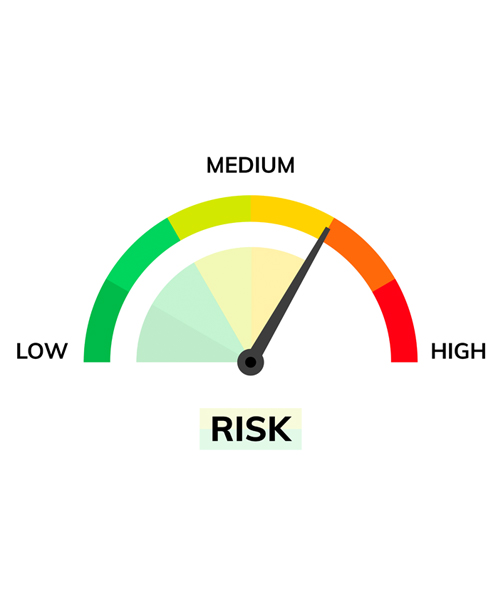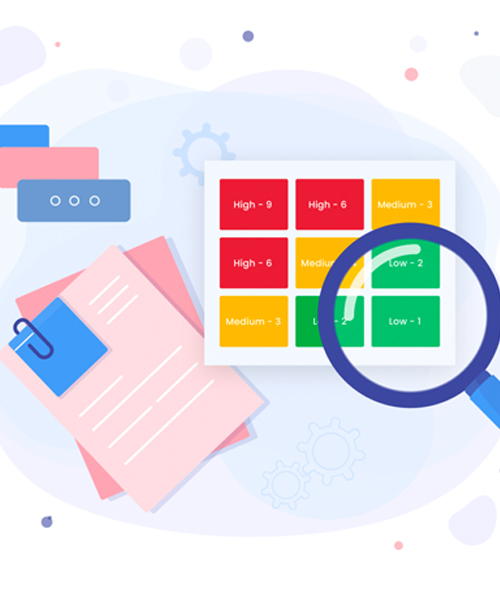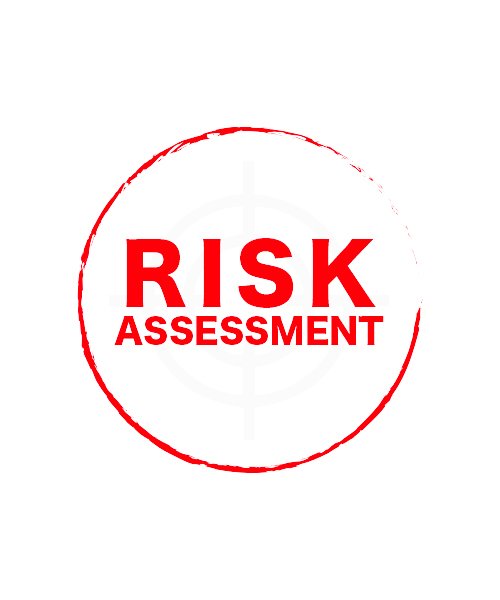Risk Assessment is a process of identifying the probable threats to businesses’ IT systems and calculating the potential loss that would incur if the attacks happened. The process aims at determining the most optimized IT security measures for businesses, that too at a reasonable cost.
In short, by using Risk Assessment companies look for the gaps in the IT security’s architecture and check the compliance of their systems to avoid attacks leading to unrepairable losses.

Typically, there are two different ways to carry out the Risk Assessment.
– Quantitative
– Qualitative
The quantitative assessment calculates the intensity of vulnerabilities by figuring out the monetary losses these can incur.
Involving the use of mathematical formulas to derive the expected losses connected with every risk, the formula takes into account three major variables:
– The value of the asset targeted
– Expected threat frequency
– Likelihood of attack on the identified vulnerability
Do note that quantitative measures aren’t always the best resort for risk assessment. In case you do not have quite substantial historical data to calculate threat occurrence probability or IT costs estimates, knowing that these change often, you must go with the Qualitative assessment.
The Qualitative risk assessment methodology is based on opinions and judgements. This process categorizes risks depending on their impact and occurrence likelihood using a rating scale.
– Termed ‘Low’ when the risk is unlikely to cause any considerate impact on the business or may not occur anyway
– Described ‘Medium’ when the risk is likely to occur along with having the strength to impact the business
– Risks are termed ‘High’ if they have a huge probability of occurrence and can cause a significant impact on the business
There are three components involved in risk assessment – assets, threats, and vulnerabilities. Our team works along with the client’s management and IT team to create the list of these components.
– Identity assets such as users, hardware, interfaces, data, software and more
– Identify threats involving cyber-attacks along with natural disasters and hardware failures
– Look for probable vulnerabilities which not only include the gap in IT software, but users’ awareness, physical locations and more.
– Any possible indicators pointing towards a probable risk
– Figure out if there are assumptions or biases involved
Once the risks are identified, it’s time to analyze their characteristics and how impactful these can turn out to be. In short, we comprehend the level of risk.
This process helps gain an understanding of the various risk sources, likelihood, uncertainties, existing controls along with their efficiency in stopping the threats and more.
The controls or measures are those that are already in place and the ones that are underway. By analyzing the measures within the businesses, we understand how strong the company already is in terms of IT security.
– Identify the likelihood of threats
– Categorize it under the ‘Low’, ‘Medium’, and ‘High’ scale
– Assess the impact that each incident can pose on the business IT system
– Categorize those impacts as ‘Low’, ‘Medium’, and ‘High’
– Check the technical measures such as authentication processes, encryption, firewalls etc. These are basically the technologies that help anticipate the possible threats and try to compact these.
– Analyze the non-technical measures such as audit processes, and compliances to understand how prepared the company is to fight against the threats that have already occurred.
– Prepare the complete list


We calculate the risk associated with each pair of threats and vulnerabilities. Using the risk-level matrix, we mark the risks as high, medium, or low priorities.
Calculate a value for each threat according to its occurrence likelihood. For instance, high occurrence means a value of 1.0 while the medium is 0.5 and low is 0.1. The same goes for the impact. For high, it is 100, the medium is 50 and low is 10. Prioritize risks as high medium and low after multiplying these values against each pair.
– Look for the right treatment to fight the risks
– Check the technical measures such as authentication processes, encryption, firewalls etc. These are basically the technologies that help anticipate the possible threats and try to compact these.
– Analyze the non-technical measures such as audit processes, and compliances to understand how prepared the company is to fight against the threats that have already occurred.
– Recommend risk treatments based on further analysis and findings
Prepare the list of risks associated with the business IT system and the suggested measures to stop those. This is the final risk assessment report containing all the analysis and suggestions.